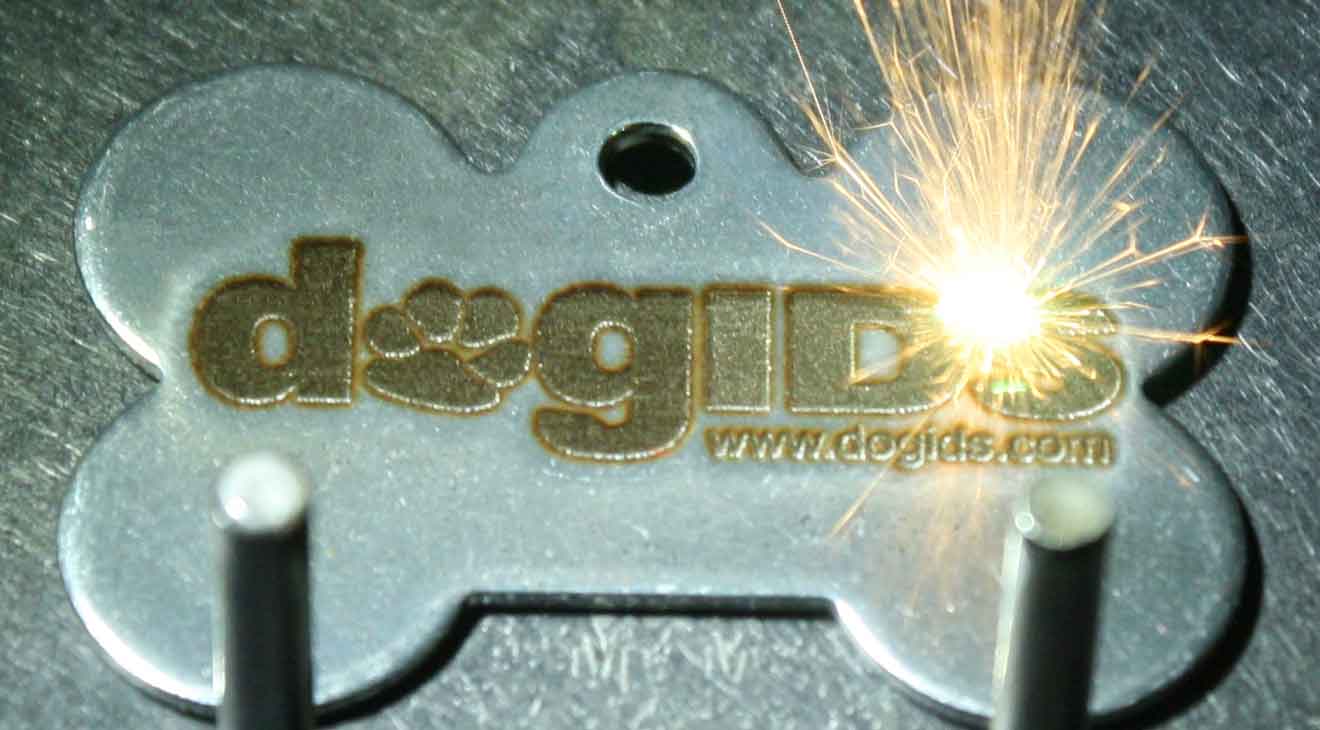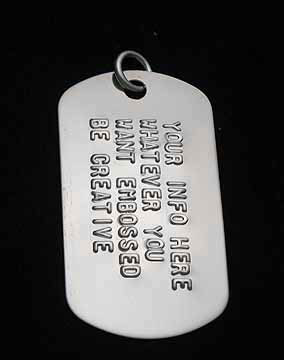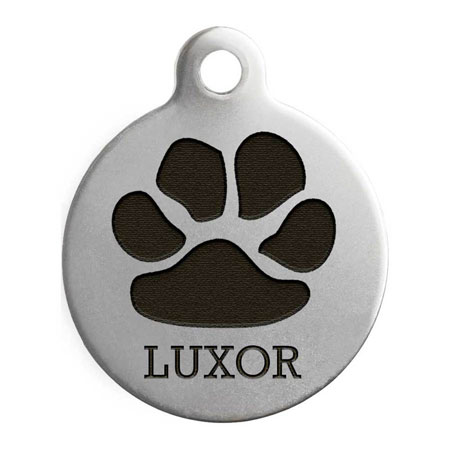The Techniques That Make Our Tags Last


When considering a new ID tag for your pup, you may not give engraving pet tags much thought at all. To ensure that your dog's ID tag can stand up to the test of time, not to mention your pup's rambunctious personality, it’s important to familiarize yourself with the different methods of engraving dog tags. Some are admittedly better than others and, as always, dogIDs is committed to bringing you the best of the best.
Embossing, Etching, and Marking
There are several ways to engrave ID tags. In fact, you've probably been to many places that claim to specialize in engraving pet tags, such as the local pet store. While you may receive a serviceable tag, the majority of pet stores and pet supply shops that offer to engrave actually rely on marking, etching, or embossing. Your dog ends up with a shiny, visually pleasing tag that’s impossible to read within a few months.

Embossing produces a product that resembles traditional dog tags. The process involves pushing the lettering or design into the metal material. The letters are raised and easy to read, but not discolored. Unfortunately, embossed dog tags are susceptible to wear and tear. In time, the lettering often becomes scratched, flattened, and illegible. This type of dog tag works great for people, but dogs need a much higher level of durability, especially if they wear multiple tags at the same time.
Etched dog tags are usually made with a smaller laser. This is often the process you’ll encounter at the local pet store. Etching only scratches the very surface of the dog tag material. At first, the tag appears flawless and shiny. All of the etched characters create a high contrast, but the contrast doesn’t last. The shiny surface quickly becomes dull and, because the etching doesn't dig into the metal, the characters become hard to read, as well.
The process of laser marking results in marks that strike a significant contrast with the metal. However, this method doesn't cut into or damage the metal. Instead, the process discolors the material in its wake, resulting in bold, legible letters and numbers that tend to wear off as the metal surface of the tag wears.
Laser Annealing
Laser annealing is another method used for engraving dog tags. Like laser marking, the process does not remove anything from the surface of the material being used. Instead, annealing creates an oxide layer on the material, leading to a high-contrast mark. Annealed tags generally feature black designs and lettering. However, it's possible to achieve green, red, yellow, and other colors with the annealing marking method. We like to use annealing on our non-metal, plastic products. No material is lost in the process, and the mark is clearly and deeply embedded in the material so it lasts longer than surface marks.
When To Say No
When it comes to engraving pet tags, you should always ask about the engraving method being used. A shop that uses rotary engraving should warrant a hard pass. This method of engraving is better suited to pieces of jewelry, such as pendants, rings, and watches. The characters are light and delicate and the engraving barely indents the surface, resulting in a product that can’t stand up to the wear and tear our pups put their tags through!
CO2 laser engraving is another undesirable method you may encounter. You can read the engraving without a problem, but it's not made to last. An active dog can destroy the CO2 engraving on his or her tag in a matter of months. That's because the laser doesn't even touch the material of the tag. The tag is first covered in Cermark, a liquid that hardens and adheres to the material of the tag. Rather than engraving the metal, CO2 lasers only leave a contrasting mark on the Cermark, so the final product is less than permanent.
Engraving and the dogIDs Difference

At dogIDs, we take a more serious approach to engraving dog tags. Our high-power fiber laser goes deep. Not only does it dig into the metal, but it vaporizes the material as well, removing the top layers as it engraves your dog's identifying information and hardens the remaining metal underneath the engraved mark. In addition to leaving an engraving that you can actually feel, it also burns the surface, creating a durable contrast that won't fade or wear away over time. There's a reason we offer a lifetime guarantee on our engraved tags in addition to our other products such as food and water bowls.
See for yourself the dogIDs difference. Explore our customer help center to learn more about our methods for engraving pet tags, buckles, and more. We can help you decide whether annealing is the best option for the products you buy, or if fiber laser engraving is the way to go. Shop dogIDs today for a better engraving experience!
Explore Popular Articles
-
Homemade Flea, Tick & Mosquito Repellent for Dogs: A Natural Recipe for Pet Parents
Jun 13, 2025Beyond the Buzz and Itch: Protecting Your Pup from Mosquitoes, Fleas, and Ticks As pet parents, we w
-
Can My Dog Eat This? A List of Human Foods Dogs Can and Can't Eat
Jun 04, 2025As loving dog owners, we consider our furry companions members of the family. They share our homes,
-
How Long Are Dogs Pregnant - Tips for Care & Safety
May 15, 2025Congratulations! If you’re reading this, your furry friend is likely expecting a litter of pup




